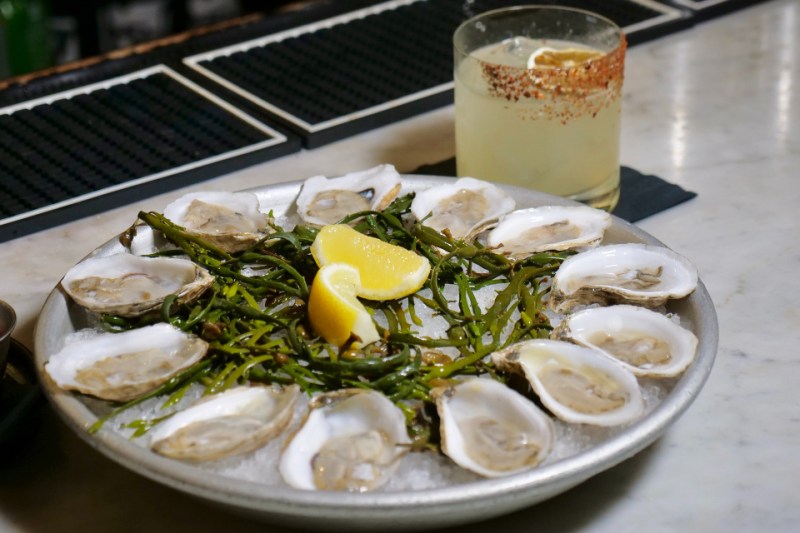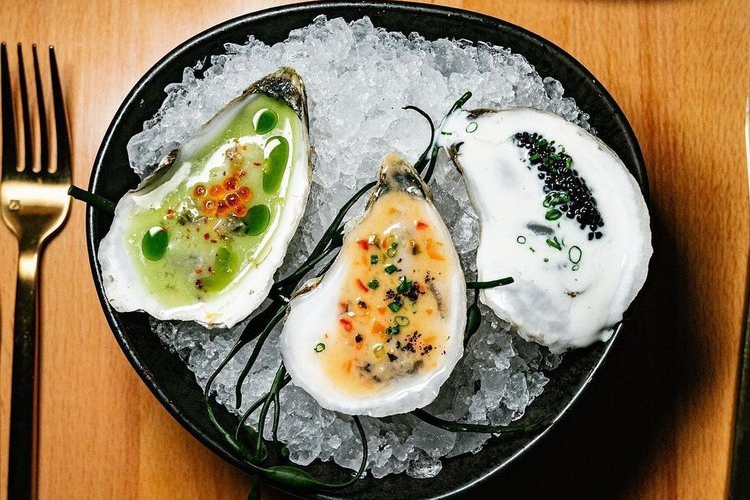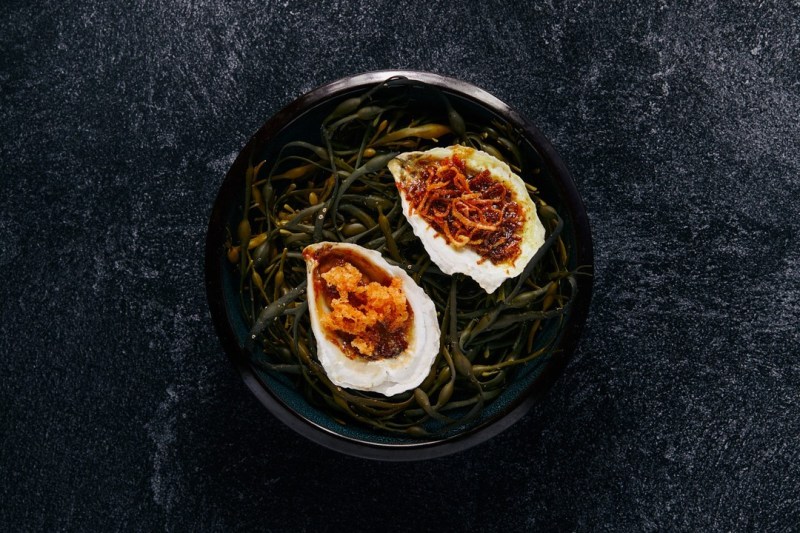
Oysters, those bite-sized bursts of ocean flavor that’s sweet, briny, and complex, are often enjoyed unadorned — raw. But sometimes, these same delicious shellfish can be tasty with extra sauces or roasted with various spices and ingredients.
At the restaurant Sagaponack, managing partner Kyung il Lee and Executive Chef Phil Choy are serving up innovative takes on these beloved shellfish. While there are plenty of delicious ways to cook oysters, Chef Choy takes inspiration from Asian and Mediterranean flavors, combining those elements with an Eastern Long Island aesthetic at the restaurant. For Chef Choy, oysters can be dressed or roasted, spanning flavor combinations like Adamas Siberian caviar, buttermilk, and yogurt to gochujang butter with serrano pepper, scallion, and sesame breadcrumbs.

Dress oysters with a creamy blend of buttermilk and yogurt
Showcasing both East Coast and West Coast oysters, Sagaponack features several varieties of dressed oysters, including a refreshing option that’s topped with yuzu kosho and dill. Oysters work particularly well with bright flavors like citrus and green herbs. Caviar is another classic pairing. But, sometimes, it helps to think outside the box regarding flavors.
“Caviar and oysters are a timeless culinary combination,” explains Chef Choy. “But we wanted to elevate this pairing by infusing it with our own unique twist. Our buttermilk is a carefully crafted blend of yogurt powder and fresh lemon juice, enhanced with the addition of gelatin for a delightful textural dimension. This innovative approach allows us to introduce our guests to the exquisite fusion of caviar and oysters in a whole new light.”
Chef Choy explains that they make caviar cream with buttermilk, sour cream, yogurt powder, lemon juice, and gelatin. “We bloom the gelatin sheet in ice water for 5 minutes and squeeze dry,” explains Chef Choy. “We then combine the bloomed gelatin with a small amount of buttermilk in a pot and gently warm while mixing until the gelatin is dissolved. Remove from heat and combine with remaining ingredients over an ice bath. Cool, mixing it every few minutes. We put a spoonful of the caviar cream onto the raw oyster, add 4 grams of caviar on top with chopped chives, then serve.”

For roasted oysters, use Korean chili paste
One of Chef Choy’s favorite roasted flavor combinations takes inspiration from Korean cuisine, particularly gochujang, combining it with a shellfish favorite — butter.
“In Korean culinary tradition, braised pork belly is traditionally accompanied by raw oysters and a subtly spicy paste known as 쌈장 (ssamjang),” explains Chef Choy. “Our interpretation of the roasted oyster experience combines the bold flavors of gochujang (고추장), serrano peppers, rich butter, garlic, pepper, a delectable sesame crumble, and the freshness of scallions.”
To make the gochuchang butter, Chef Choy seeds and chops a serrano chili and combines it with microplaned garlic, rice vinegar, tempered butter, and Aleppo pepper. Then, he whisks until it’s homogeneous, adds the mixture to the oysters, squeezes some lime juice, and blasts them in the oven for roughly 5 minutes. Once the oysters are cooked, Chef Choy tops each oyster with sesame crumbs and a scallion ribbon.



